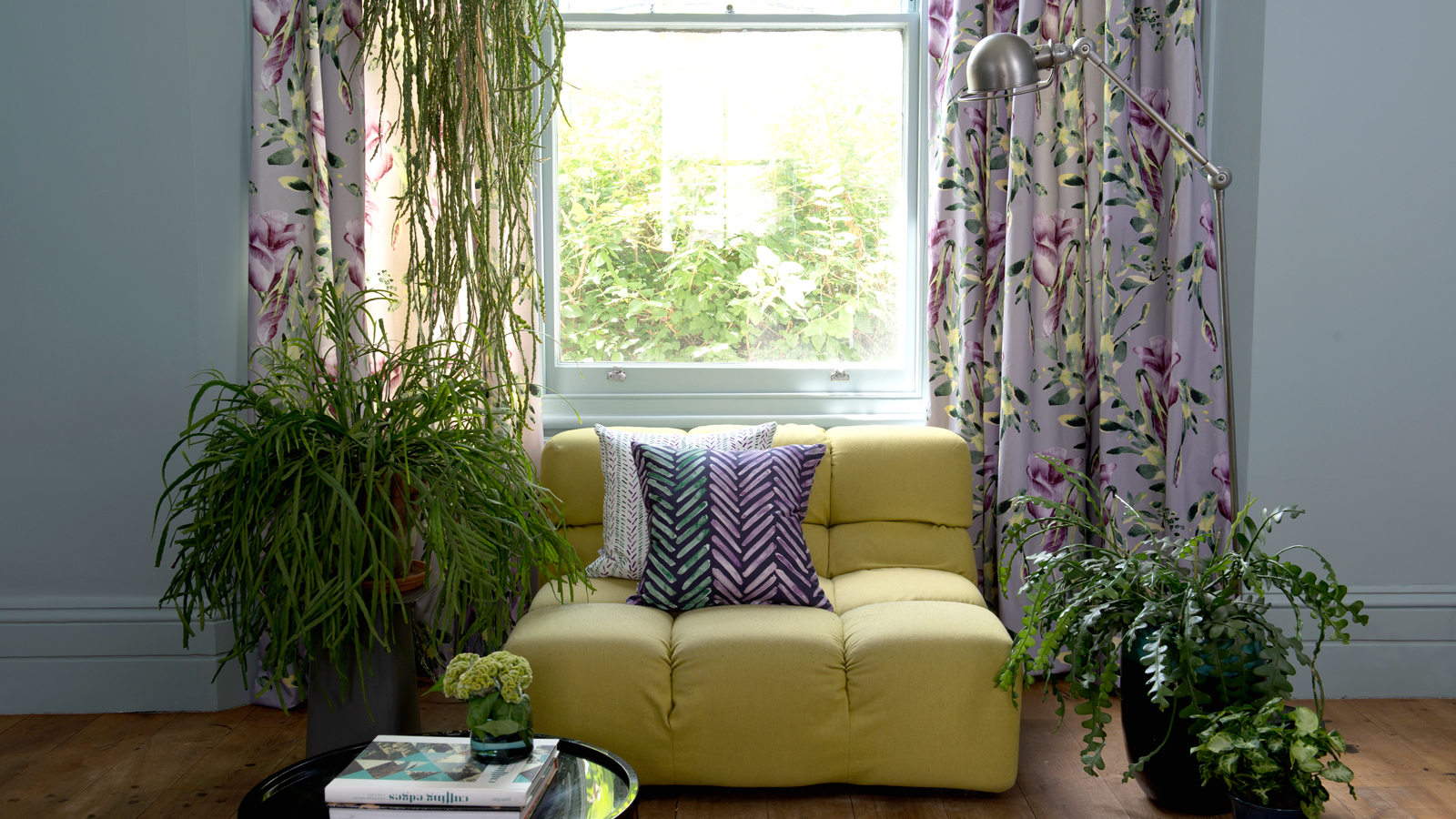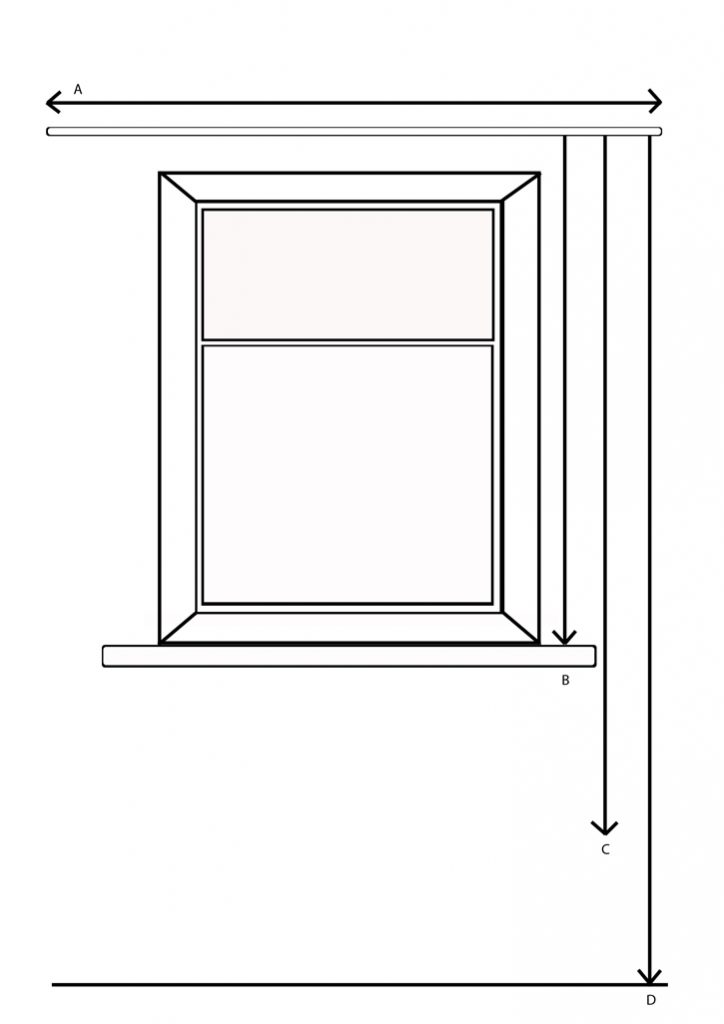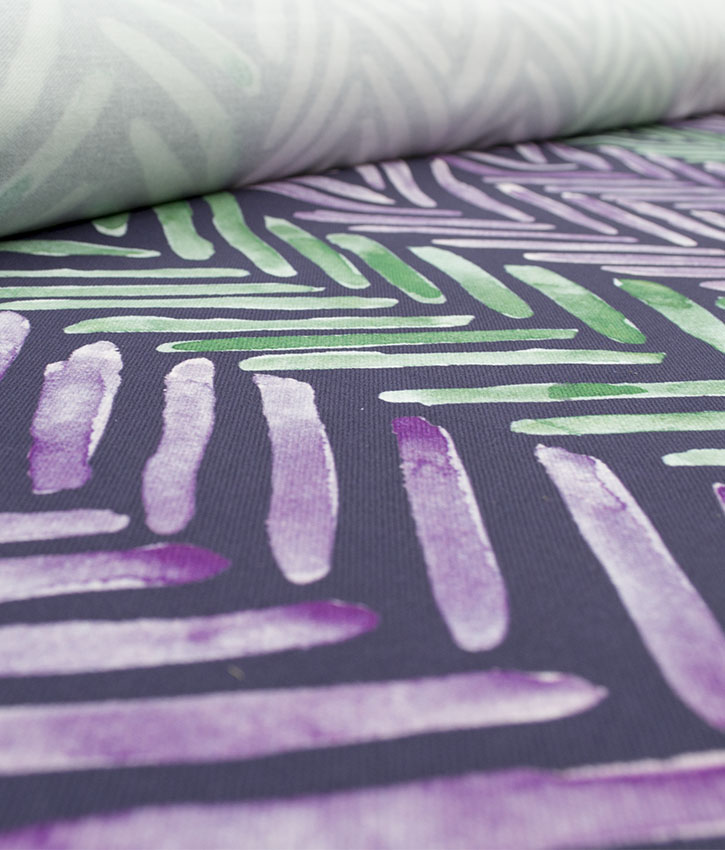Does your home need updating with a fresh injection of colour and pattern? By introducing a new colour palette and exciting new pattern, changing curtains is a simple way to update a room that’s due a much needed makeover. Why not give making your own curtains a go with our simple guide? Covering everything you need to know from measuring your window, to choosing one of our beautiful fabrics to make them from.
First of all, make sure you have your curtain pole or track in place before measuring for curtains. This will give you accurate measurements to ensure the best fit. There are a few measurements that you need to take of the window to work out how much fabric you will need.
The maths for measuring curtains
Measure the width of the curtain pole between the finials and the width from end to end for a track (see A on diagram). The curtain pole or track should sit approximately 20 – 30 cm each side of the window, so that there is room for the curtains to be pulled back and let the light in.
Measure from the underside of the curtain ring to the desired length of the curtain, so that the pole can be seen above the curtains.
For tracks, measure the drop from the top of the track so that the curtains will hang above the track when in place. Decide whether you would like the curtains to be sill length, below sill length or floor length.
- For sill length curtains, measure 1cm above the sill (see B)
- For below sill length curtains, measure to the desired length (see C)
- For floor length curtains, measure 1 cm above the floor, or have them longer if you would like them to drape on the floor (see D)
- These measurements are a guide for standard pencil pleat, double and triple pleat headed curtains. If you are making other styles, such as eyelet or tab headed curtains then you will need to make extra allowances for those, depending on the size of the eyelets or tabs.
Fullness
Decide how full you would like your curtains to be when in place. If you would like really gathered, full curtains then you will need extra fabric to accommodate this.
Allow x1.5 for light fullness
x2 for standard fullness
x2.5 for heavy fullness
If you are using a patterned fabric, measure the pattern repeat so that this can be matched across your pair of curtains.
Calculations
With these measurements, you can now calculate how much fabric you will need. Let’s use our Herringbone Indigo fabric and some window measurements as an example.
Fabric width – 140 cm Curtain pole/track width – 120 cm
Pattern repeat – 45.5 cm Finished curtain length – 150 cm
Fullness – x2 (standard)
To calculate the number of fabric widths needed per curtain:
Multiply the pole/track width by the fullness
120 x 2 = 240
Divide this by the fabric width and round to the nearest whole number
240 / 140 = 1.71 = 2 widths
To calculate the amount of fabric needed:
Finished curtain length plus heading allowance plus hem allowance
150 + 5 + 20 = 175
Divide this by the pattern repeat and round up to the nearest whole number
175 / 45.5 = 3.85 = 4
Multiply this by the pattern repeat
4 x 45.5 = 182
Multiply this by the number of widths
182 x 2 = 364
Add one pattern repeat (this will accommodate you deciding where the pattern will start)
364 + 45.5 = 409.5
= 409.5 cm rounded up to 5 metres.
This would be plenty of fabric to make up a pair of pencil pleat curtains at standard fullness using the example measurements, with allowances for the pattern repeat and hems. Leftover fabric is perfect for making some co-ordinating tie backs or cushions to complete the look. Calculate the quantity of lining needed in the same way, without allowing for the pattern repeat. Get yourself some heading tape and you’ll be well on your way to making a pair of new curtains. Our beautiful fabrics are perfect for making curtains – they are 100% natural and are all printed here in the UK. Take a look at our full range of fabrics and matching cushions for some ideas, including full details of measurements for you to get calculating how much fabric you’ll need.






